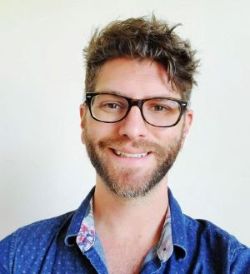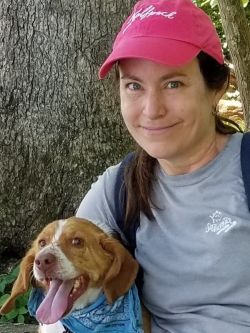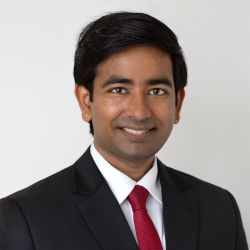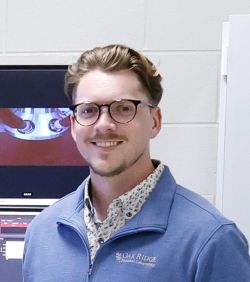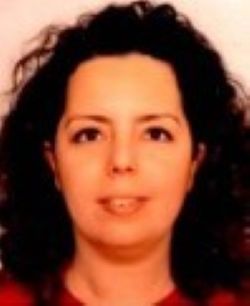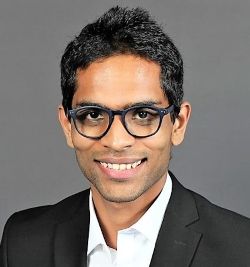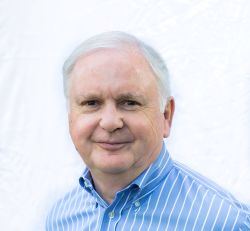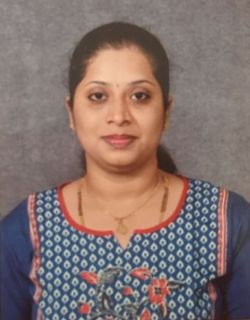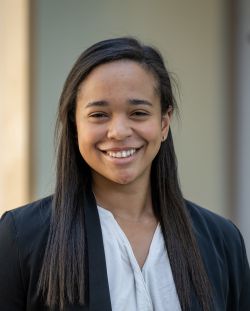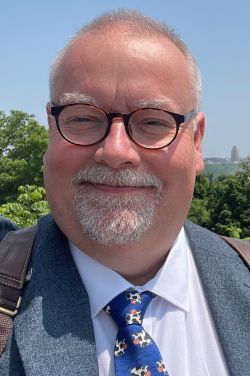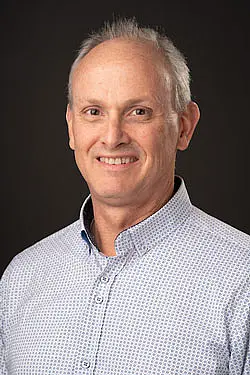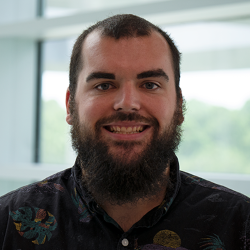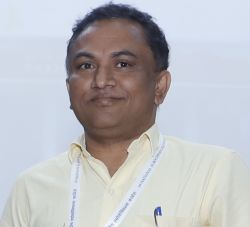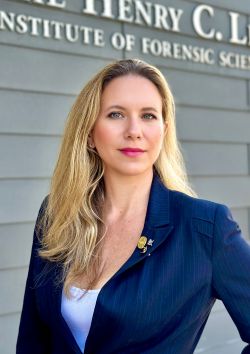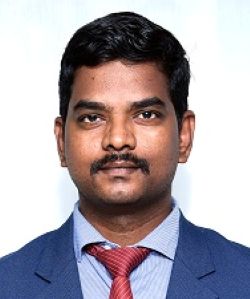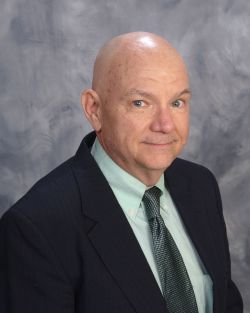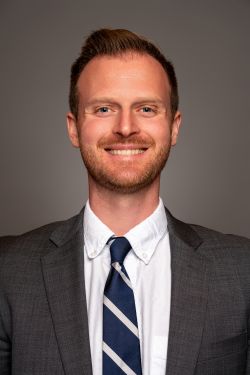2025 SAS NomineesElections will be held October 27 - November 14, 2025. Thank you in advance for your active participation in this year's election! Meet the nominees below: President (select 1) Jay Kitt
SAS Vision: For as long as I have been a member, the Society for Applied Spectroscopy has been more than just a professional organization; the most common way I hear it described is as the SAS family. This sense of kinship is the heart of what makes SAS special. The connections we build, the mentorship, the collaborations, and the friendships, are often cited as the most valuable part of being a member. This is a legacy we must not only protect, but also expand for a new generation of spectroscopists. To honor our past and build a strong future, our vision must focus on strengthening the main priorities of our society: our professional value, our global community, and our public presence. 1. A Stronger Professional Purpose We face the challenge of declining membership. The solution lies in a clear and compelling purpose (value proposition for all you marketers out there). We must do more than simply exist; we must actively demonstrate why joining SAS is important for a career in spectroscopy. My vision includes developing and consistently communicating the tangible benefits of membership, to this end I support our President Elect’s vision of keeping the newsletter up front and informative, but also consistent in messaging. Creating value also lies in efforts toward new networking opportunities, making more forums for our members to be seen and recognized in the community, and providing tangible career development resources. We must show that SAS is not just an organization to join, but a community that actively invests in the success of its members. 2. A Global Community The global nature of spectroscopy means that our community should not be limited by geography. Yet, somewhat of rift has emerged between our members in the US, Europe, the UK, and Asia. In an age of instant global communication, this is a gap we can and must bridge. We will focus on building this global community through easily accessible online initiatives, such as virtual workshops, group presentations, and online forums that bring our members together, regardless of where they are. This will encourage a richer, more diverse exchange of ideas and talent, making our society stronger. 3. Revitalizing Our Journal-Society Relationship and Public Presence Our journals, Applied Spectroscopy and Applied Spectroscopy Practica, are important to our financial stability and they represent the intellectual heart of our SAS. There is a clear opportunity to increase participation through requests for articles/issues of interest, an open connection between our publications committee, our governing board, and the journal editors. It’s always been interesting to me that there is such a divide between the “academic” and “Industry” sides of the Society; this can be addressed by keeping the journal at the core of what we regularly think about as the governance of SAS. This closer interaction will strengthen our journals and provide more opportunities for our members to engage with the spectroscopic research community. Also, our public reach has been hindered by issues with our social media platforms. As president, I would make it a priority to fix these issues and grow our digital presence. By consistently communicating our value and promoting the field of spectroscopy as a whole, we can attract new members, engage with a wider audience, and ensure the continued growth of our profession. 4. Honing Our In-Person Connections While digital connections are important, nothing can replace the power of face-to-face interaction. The in-person meetings at SciX are a cornerstone of our community, the very place where our members come together. While our budget has shifted, which has impacted our ability to fund activities at SciX, we must focus on the fundamentals: making sure these meetings are lively, welcoming, and productive. We must concentrate on creating meaningful networking opportunities and events that encourage the personal, informal interactions that define our community. My vision is to lead SAS toward a future where we a leading professional society in our field that actively supports, successful, and supportive community that every spectroscopist is proud to be a part of. His CV may be found here. Treasurer (select 1) Brandye Smith-Goettler Brandye Smith-Goettler is a Data Scientist at Merck & Co., Inc., where she applies mathematical modeling and digital-transformation methods to support pharmaceutical development. She earned her Ph.D. from North Carolina State University, where her research combined Fourier-transform infrared (FTIR) spectroscopy and chemometrics for protein analysis. After graduate school she worked as a chemometrician in biotechnology, then joined Process Analytical Technologies (PAT) teams at GSK and Merck before transitioning into data science to focus on artificial intelligence and machine-learning applications in pharmacuetical development. Her CV may be found here.
Governing Board (select 5) Ayush Agarwal
Ayush Agarwal is a chemical engineer currently finalizing his PhD in Energy at EPFL, focusing on advanced analytical methods for energy and environmental applications. His doctoral research, conducted primarily at the Paul Scherrer Institute, centers on developing and optimizing methods for biogas analysis and nanoparticle characterization using hyphenated ICP based instrumentation methods. His expertise covers the entire analytical pipeline, including interdisciplinary collaboration, efficient sample preparation, robust method validation, and high-throughput analytical workflows. Ayush is passionate about bridging science and industry. He has collaborated extensively with academic, industrial, and metrology partners across Europe, published multiple articles in high-impact journals, and has received several awards, including the Best Oral Presentation Award from the Swiss Chemical Society, the Chemistry Travel Award from the Swiss Academy of Natural Sciences, and the Society for Applied Spectroscopy Student Award. As an early-career scientist, Ayush brings an interdisciplinary perspective and a strong commitment to applied spectroscopy. He seeks to contribute to SAS by strengthening its global reach, promoting engagement among young scientists, and fostering collaborations that translate spectroscopic advances into industrial and societal impact. His CV may be found here.
Dr. Hunter B Andrews Hunter Andrews is an R&D Staff Scientist in the Isotope Applications Research Group within the Radioisotopes Science and Technology Division. He first joined ORNL as a postdoctoral researcher in the spring of 2020 and transitioned to staff in the summer of 2021. His research focus revolves around the development of in-situ, online monitoring tools for complex environments. His main expertise lies in optical spectroscopy, particularly laser-induced breakdown spectroscopy (LIBS), a rapid form of spectroscopy capable of elemental analysis regardless of sample form. Other research interests include analytical chemistry, electrochemistry, spectroelectrochemistry, neutron imaging, molten salts, inorganic mass spectrometry, chemometrics, and machine learning. Dr. Andrews received his Ph.D. in Mechanical and Nuclear Engineering from Virginia Commonwealth University in 2020. His graduate research focused on the near-real time material detection through combined implementation of electrochemistry and LIBS for molten salt systems. His CV may be found here.
Dr. Sarah El Azizi Dr. Sarah El Azizi is an environmental scientist and spectroscopy specialist with a strong interest in bridging research and practical solutions for sustainability. She holds a PhD in Geomatics and Environment from Abdelmalek Essaadi University (Morocco), where her work focused on using UV–NIR field spectroscopy to study and monitor medicinal and aromatic plant species. Her interdisciplinary background combines remote sensing, chemometrics, and environmental science, with particular strengths in data analysis, algorithm development, and field spectroscopy. She has applied these tools to biodiversity conservation and precision agriculture — with a goal of supporting more resilient, sustainable ecosystems. Sarah has taught and trained students in Morocco and Mauritius in spectroscopy, cartography, pedology, and environmental monitoring. She has published several peer-reviewed articles, many as first author, in international journals and has been invited to present at conferences and workshops. In 2008, she was awarded the prestigious L’Oréal–UNESCO “For Women in Science” fellowship in Morocco. Having worked across North Africa and the Indian Ocean region, she brings a global and inclusive perspective to applied spectroscopy. She believes strongly in the power of scientific collaboration, open data, and mentorship — especially for women and early-career researchers. Joining the SAS Governing Board would be a natural continuation of her commitment to the field. She hopes to contribute her experience, energy, and vision to advancing SAS’s mission, especially in connecting communities and building bridges between science and practice. Her CV may be found here.
Dr. Saikat Banerjee Dr. Saikat Banerjee is a Senior Scientist and the Analytical Lab Leader at DuPont Automotive, working cross-functionally across different product life cycle stages with diverse internal and external stakeholders. The Analytical function empowers new product launches, product scale-up, regulatory analysis, customer issues and test requests as well as root cause analyses. Saikat and the Analytical Team have collaborated heavily over the last two years to develop state-of-the-art analytical solutions to empower product development in Advanced Mobility. Before joining DuPont, Saikat worked on materials for catalysis applications in his postdoctoral research at Northwestern. Saikat earned his bachelor’s degree with Chemistry Honors from the University of Calcutta, his master’s degree from IIT Kanpur, India, and a Ph.D. in Chemistry from the University of Minnesota in Twin Cities. His CV may be found here.
Dr. Richard A Crocombe Richard Crocombe is the Principal at Crocombe Spectroscopic Consulting. Prior to this he worked at a number of companies on the development of new spectrometers and their applications, and worked extensively with portable spectrometers, including Raman, mid-infrared, near-infrared, XRF and GC/MS. His main current interest is in miniature and portable spectrometers. For the Society for Applied Spectroscopy (SAS), he is a former chair of the New England section, former elected Governing Board member, and former President (2020) of the national Society. He led the effort to establish SAS’s second scientific journal (“Applied Spectroscopy Practica”), launched in 2023, and he was its founding Editor-in-Chief, before stepping down to the Editor position for 2025. Also for SAS, he was active in organizing and participating in webinars produced by SAS’s media partners, including Spectroscopy magazine, Photonics Spectra and John Wiley. He is a former board member and secretary of The Coblentz Society, and for ten years was chair of the SPIE conference ‘Next-Generation Spectroscopic Technologies’. He has published extensively on the technologies and applications of miniature and portable spectrometers, including a comprehensive review article in Applied Spectroscopy in 2018, downloaded over 34,000 times. Richard Crocombe, Pauline Leary and Brooke Kammrath are the joint editors of the two-volume book, ‘Portable Spectroscopy and Spectrometry’, published by John Wiley in April 2021. His most recent publication is “Using LEGO Blocks for the Evaluation of Fluorescence Avoidance and Mitigation in Handheld Raman Spectrometers”. Applied Spectroscopy, June 2025. His CV may be found here.
Dr. Rashmi D I am Dr Rashmi working as Assistant Professor under DBT BUILDER project at JSS AHER Mysore. Presently working on identification of biomarkers related to immune responses using Flow cytometer. Metabolomics, Lipidomics & Proteomics studies for the analysis of blood biomarkers using LC-HRMS. Developing a sustainable & reliable method for metabolite profile for identifying the targeted molecule produced during the normal and altered metabolic pathways. Processing and profiling of Serum & Plasma for the quantification of the biomarker. I am enthusiastic and have the intellectual capability combined with excellent communication and presentation skills which has been demonstrated on numerous occasions at various seminars. I work independently and as well as in a group which is a sign of positive approach and strength of mine. I am good people relationship management and have collaborative projects with different researchers. I did my dissertation from CFTRI Mysore entitled ‘Isolation and Characterization of Proteolytic Bacteria from Poultry Intestine’ under Dr Sachindra. Worked in Pharmaceutical company as Quality control executive for 2 years and joined research on the topic of “Isolation and Characterization of Bacteriocins from Food Borne Bacteria” under the guidance of Dr. Sharmila T, Department of Microbiology and Biotechnology, Bangalore University, Bangalore. The work involved in the Isolation of bacteriocin N-tetradecanoyl-L-homoserine lactone (N-AHL) from a probiotic strain Acinetobacter variabilis screened from donkey milk. The work concentrated on analysis of protein with direct cell interaction by Surface Plasma Resonance (SPR) BIAcore technique. The work had an approach on establishing the stable conjugates of gold nanoparticles with the bacteriocin which had a resistant against the change in pH that can survive in the biological systems. I have published ten research papers in International Journals, presented thirteen research papers in national and international symposia, conferences and attended few seminars and workshops. I have worked as resource person in the national level workshops also.
Dr. Londrea Garrett
Londrea Garrett received her Ph.D. from the University of Michigan in the Nuclear Engineering and Radiological Sciences Department (2025). She completed her bachelor’s degree in chemical engineering at the University of Rochester (2020), where she was a member of the Optical Materials Group at the Laboratory for Laser Energetics. She is a recipient of the Nuclear Nonproliferation and International Safeguards and GEM Fellowships and has been a contributing author on nine peer-reviewed publications. Her research focuses on how laser-induced breakdown spectroscopy and related optical spectroscopy techniques can be used for novel nuclear diagnostics, particularly for safeguards and advanced reactor applications. She was recently selected as a recipient of the Hoffman Postdoctoral Fellowship at Lawrence Berkeley National Laboratory. Her CV may be found here. Dr. Roy Goodacre Roy Goodacre is Professor of Biological Chemistry at the University of Liverpool and an internationally recognised leader in analytical chemistry, particularly in Raman and infrared spectroscopy, as well as metabolomics. His research focuses on applying vibrational spectroscopy to biological systems for improved understanding and diagnosis of disease, microbial detection, and the study of antimicrobial resistance (AMR). Roy has pioneered the integration of surface-enhanced Raman spectroscopy (SERS) and infrared (FT-IR and O-PTIR) spectroscopy with advanced chemometric and machine learning approaches to deliver rapid, label-free, and non-destructive analytical tools. These methods enable the real-time characterization of complex biological samples, including bacteria, human biofluids, and food products. In addition to his work in spectroscopy, Roy is a key figure in the field of metabolomics. He combines mass spectrometry (GC-MS and LC-MS) and vibrational spectroscopy to understand metabolic pathways and biochemical changes in health and disease. His group has led the development of long-term metabolomics strategies, correcting for instrument drift across large clinical datasets. These innovations have significantly advanced large-scale studies in clinical areas. Roy is a Director of the Centre for Metabolomics Research at Liverpool and Editor-in-Chief of the journal Metabolomics. He played a central role in establishing the Metabolomics Society and served as its President from 2022 to 2024. He is also a trustee of the Analytical Chemistry Trust Fund. A prolific researcher and collaborator, his work bridges chemistry, biology, and data science to tackle major challenges in healthcare, microbiology, and food security, making him a prominent figure in analytical biosciences. His CV may be found here.
Dr. Mark P Heitz Mark began his academic training at The King’s College, Briarcliff Manor, NY, earning his bachelor’s degree in chemistry. Graduate studies included work at Rochester Institute of Technology with Professors Gerald Takacs and Vladimir Vukanovic working on plasma-based surface modifications of polyimide coated silicon substrates. He earned a master’s degree in physical chemistry at the University of Rochester in 1990. In 1995, Mark earned his Ph.D. in Analytical Chemistry under the tutelage of Frank V. Bright. His doctoral dissertation focused on solute dynamics in reverse micelles formed in liquids and supercritical fluids. Mark assumed a post-doctoral position at The Pennsylvania State University with Mark Maroncelli, working on solvation dynamics in liquids and supercritical fluids. Mark currently serves as full Professor of Chemistry and Department Chair at SUNY Brockport where he teaches courses with primary emphasis on analytical and physical Chemistry. At Brockport, his research focuses on molecular solvation dynamics of small solutes and biomolecules in sustainable media, specifically ionic liquids and deep eutectic solvents. His research has attracted extramural funding from the National Science Foundation and the New York State Department of Environmental Conservation. In professional service, Mark has been highly active within the Rochester Local Section, American Chemical Society, since 2002 and has served on the executive committee since 2004. He was honored to be inducted as an American Chemical Society Fellow, Class of 2019. He also serves on the MDPI editorial boards of ChemEngineering and Molecules.
Dr. Willis Bradley Jones
Will Jones is an assistant professor in the Department of Chemistry and Biochemistry at the University of North Florida. He received his BS from Wake Forest University (2014) and PhD from the University of Florida (2019), both in Chemistry. His work as a graduate student under the mentorship of Dr. Nico Omenetto focused on the improvement and characterization of shot-to-shot noise in laser-induced breakdown spectroscopy (LIBS). He completed a postdoc at Savannah River National Laboratory under the guidance of Dr. Alicia Fessler, focused on practical applications and instrument development using LIBS, Raman spectroscopy, and time-of-flight mass spectrometry. He began his position at UNF (a primarily undergraduate institution located in Jacksonville, FL) in 2022, where he leads a team of eleven UNF undergraduates in his research laboratory. Dr. Jones’ current research interests are centered in the development of novel analytical calibration strategies that broadly benefit trace level analysis by simplifying and speeding up sample preparation and physical measurement processes, improving upon statistical figures of merit, and correcting for sample matrix effects. The methods developed in the Jones lab are developed with versatility in mind, and can be applied to a wide range of analytical instrumentation. Techniques that have recently come out of his laboratory include multi-channel dilution analysis (MCDA), calibration by proxy (CbPx), and multi-wavelength internal standardization (MWIS). His CV may be found here. Dr. Suresh Kumar Kailasa Suresh Kumar Kailasa, FRSC, is an Associate Professor of the Department of Chemistry at Sardar Vallabhbhai National Institute of Technology Surat, Gujrat, India. He obtained M.Sc (2001) and PhD (2005) in Chemistry. He has completed two Postdoctoral Fellowships at Chonbuk University, South Korea and at National Sun Yat-Sen University, Taiwan. He received Young Scientist Award from Taiwan Mass Spectrometry Society in 2013. He was Visiting Research Professor (June – July 2022 & May – July 2019) and Research Professor (January – September 2018) at Department of Chemistry, Chung-Ang University, Seoul, South Korea. He worked as a Visiting Scientist at Department of Chemistry, National Sun Yat-sen University, Taiwan in 2010. He was selected as a Brain Pool Scientist at the Department of Chemistry, Chung-Ang University, South Korea in 2017 and 2023. He was selected as a Fellow of Royal Society of Chemistry, The Royal Society of Chemistry, UK and Fellow of the Society of Pesticide Science India in 2019. He was also selected as a life member of the National Academy of Sciences, India (NASI), India in 2021. He acted as Guest Editor in the special issues in Applied Sciences (MDPI), Materials Today Chemistry, Inorganic Chemistry Communications (Elsevier) and Environmental Science and Pollution Research (Springer). He is acting as an Advisory Board Member, Sensors and Diagnostics (RSC Publications) since 2023. He is the author of 294 peer-reviewed papers and has a h-index of 64 and has accumulated over 13898 citations. His research interest in the field of analytical chemistry, MALDI-MS, ESI-MS, microextraction, nanosensors, drug delivery, functional nanomaterials for the development of new analytical strategies. His CV may be found here. Dr. Brooke Weinger Kammrath Brooke W. Kammrath, Ph.D., ABC-GKE is a Professor of Forensic Science at the University of New Haven and Co-Executive Director of the Henry C. Lee Institute of Forensic Science. In addition, she works as a consulting criminalist where she is a qualified expert in both state and federal courts. Professor Kammrath is certified with the American Board of Criminalistics (ABC), is on the Board of Directors for the Eastern Analytical Symposium (EAS), is the past-president of the New York Microscopical Society (NYMS), is a past member of the Governing Board of the Society for Applied Spectroscopy (SAS), and is a member of several professional organizations (including the American Academy of Forensic Sciences and the Northeastern Association of Forensic Scientists). She is an Associate Editor of the Journal of Forensic Sciences and Applied Spectroscopy Practica. Dr. Kammrath is the co-editor of the books Portable Spectroscopy and Spectrometry I and II with Richard Crocombe, PhD., and Pauline Leary, PhD. and Solving Problems With Microscopy: Real Life Examples in Forensic, Life and Chemical Sciences with John A. Reffner, PhD, and the co-author of the book Blood Traces with Peter R. DeForest and Peter A. Pizzola, PhD. She has also co-authored 2 laboratory manuals, 11 book chapters, 26 journal articles, 4 encyclopedia articles, and over 100 professional conference presentations.
Dr. Suresh Sathyanathan
Dr. Suresh Sathyanathan is an Associate Professor of Physics at St. Joseph’s College of Engineering, Chennai, with over 20 years of teaching experience and more than 10 years of active research. He earned his Ph.D. in Physics from Bharathiar University, with a specialization in the synthesis and spectral investigation of transition metal oxide nanoparticles for multidisciplinary applications. A committed educator and researcher, Dr. Suresh has published 25 research articles indexed in Web of Science, spanning topics such as nanomaterials, photocatalysis, polymer nanocomposites, and environmental physics. He has also published one non-indexed article and co-authored a book chapter titled “Metal Oxide Nanomaterials for Sensor Applications” (DOI: 10.1002/9781119364726.ch6), contributing to applied nanoscience literature. His work focuses on the functionalization of nanoparticles for use in water treatment, anti-corrosion coatings, biomedical fields, and sustainable agriculture. He is currently guiding two Ph.D. scholars and has reviewed international project proposals, notably under the SONATA scheme, National Science Center, Poland. Dr. Suresh has been recognized with the “Best Faculty Award” (2022) by Saveetha School of Management and has contributed as a translator for several NPTEL online physics courses into Tamil, promoting regional academic accessibility. With expertise in software tools like Origin, SPSS, and Gaussian, and a record of interdisciplinary collaboration, Dr. Suresh is passionate about blending research with impactful teaching practices. He regularly participates in workshops, FDPs, and academic forums to stay at the forefront of scientific and pedagogical innovation His CV may be found here.
Dr. David W Schiering Dr. David W. Schiering is a scientist-entrepreneur who has spent his entire, nearly 40-year career developing vibrational spectroscopy instruments and methods at industry-leading companies and start-ups. He is now a 908 Devices Fellow at 908 Devices, Inc. Dave received a BS in chemistry from Georgetown College and a PhD in analytical chemistry from Miami University. Dave’s roles have been principally in positions of leadership in product and technology development at Perkin-Elmer Corp., Thermo Electron, Inc. (now Thermo Fisher Scientific), SensIR Technologies, Smiths Detection, RedWave Technology, and 908 Devices. Dave has provided vital contributions in the development of commercial vibrational spectroscopy instruments that have included FT-IR and Raman spectrometers, optical accessories, microscopes, and software. Dave has been instrumental in the development of spectrometers and methods for portable and handheld devices used outside of the laboratory for defense and security applications. Dave has co-authored many publications on various aspects of vibrational spectroscopy. He was an adjunct Assistant Professor of Chemistry at Miami University. Dave has served the Coblentz Society as a member of the Board of Managers and as secretary. He presently serves the Society for Applied Spectroscopy as president of the NY/NJ Section. Dave has received a Student’s Award from the Coblentz Society, an Honorary Membership award from the Coblentz Society, a Society of Applied Spectroscopy Fellows award, and the Coblentz Society’s Williams-Wright Award. His CV may be found here.
Dr. Joseph P. Smith
Dr. Joseph P. Smith is currently a Director at Merck within the Data Rich Experimentation organization in the Process Research & Development department. At Merck, Dr. Smith leads a multidisciplinary research group devoted to inventing data rich technologies to enable process-focused efforts across small molecules, biologics, and vaccines. Dr. Smith earned his B.S. in Chemistry from the Pennsylvania State University in 2012, where his research focused on synthesis and characterization of magnetic nanoparticles. Dr. Smith then earned his Ph.D. in Analytical Chemistry from the University of Delaware in 2017, where his research focused on developing novel analytical tools leveraging spectroscopy, hyperspectral imaging, data science, and chemometrics to analyze geological and planetary materials. Dr. Smith then began his industrial career at Merck in 2017, where he remains today. Dr. Smith has published over 55 peer-reviewed articles to date and currently has over 1525 citations with an h-index of 18 and an i-10-index of 28. During his professional career, Dr. Smith and his research group have championed the development of next generation enabling technologies at the intersection of data science, machine learning, multivariate analysis, spectroscopy, imaging, and process analytical technology (PAT). Dr. Smith has presented at over 61 conferences with 31 invited presentations and 7 award symposia. Dr. Smith is deeply passionate about outreach and service. He has advised multiple postdoctoral fellows and interns at Merck, served as a reviewer for over 30 journals, volunteered in the SAS Early Career Committee, served as Merck-NIIMBL representative, and served as the lead Merck-University of Delaware ambassador. He is a mentor in the Science and Engineering Leadership Initiative, designed to enable students with disabilities to pursue STEM careers. Dr. Smith has received the Emerging Leader in Molecular Spectroscopy Award, the Bruce Kowalski Award, the Glenn Skinner Memorial Award, the EAS Graduate Student Award, and the University of Delaware’s Excellence in Teaching Award. His CV may be found here.
Dr. Maria Tarapoulouzi
Dr. Maria Tarapoulouzi holds a BSc in Chemistry, postgraduate diplomas in Toxicology (PGDp) and Environmental Engineering (MSc), and a PhD in Chemistry, focused on the spectroscopic and chemometric characterization of Cyprus’ Halloumi cheese. She is currently a Postdoctoral Researcher and Special Research Scientist at the University of Cyprus, working on advanced spectroscopic techniques for food integrity, safety, and authentication. Her expertise lies in the application of non-destructive spectral methods, such as 1H-NMR, MIR, NIR, HSI and Raman spectroscopy, combined with chemometrics for characterizing food and beverages. Her research spans Halloumi, wine, olive oil, potatoes, and table olives. She has contributed significantly to interdisciplinary research through her involvement in COST Action 19145 as both Management Committee member and secondary proposer, promoting the use of spectral technologies in food science. Dr. Tarapoulouzi has participated in numerous research projects, including WINEC (University of Cyprus, 2012), IsoDatabase (State General Laboratory, 2022–2025), and her current project SERAFINA (University of Cyprus, 2025–present), which focuses on Raman spectroscopy for detecting acrylamide in food. Her scholarly output includes 24 peer-reviewed articles, 9 book chapters, and 3 books as author and editor, with an h-index of 12 (Google Scholar). She actively presents her work at international conferences and serves as an expert evaluator for the Slovak Research and Development Agency. Joining the SAS Governing Board aligns with her passion for fostering international collaboration, mentoring early-career scientists, and advancing practical applications of spectroscopy in food research. Her CV may be found here. |

